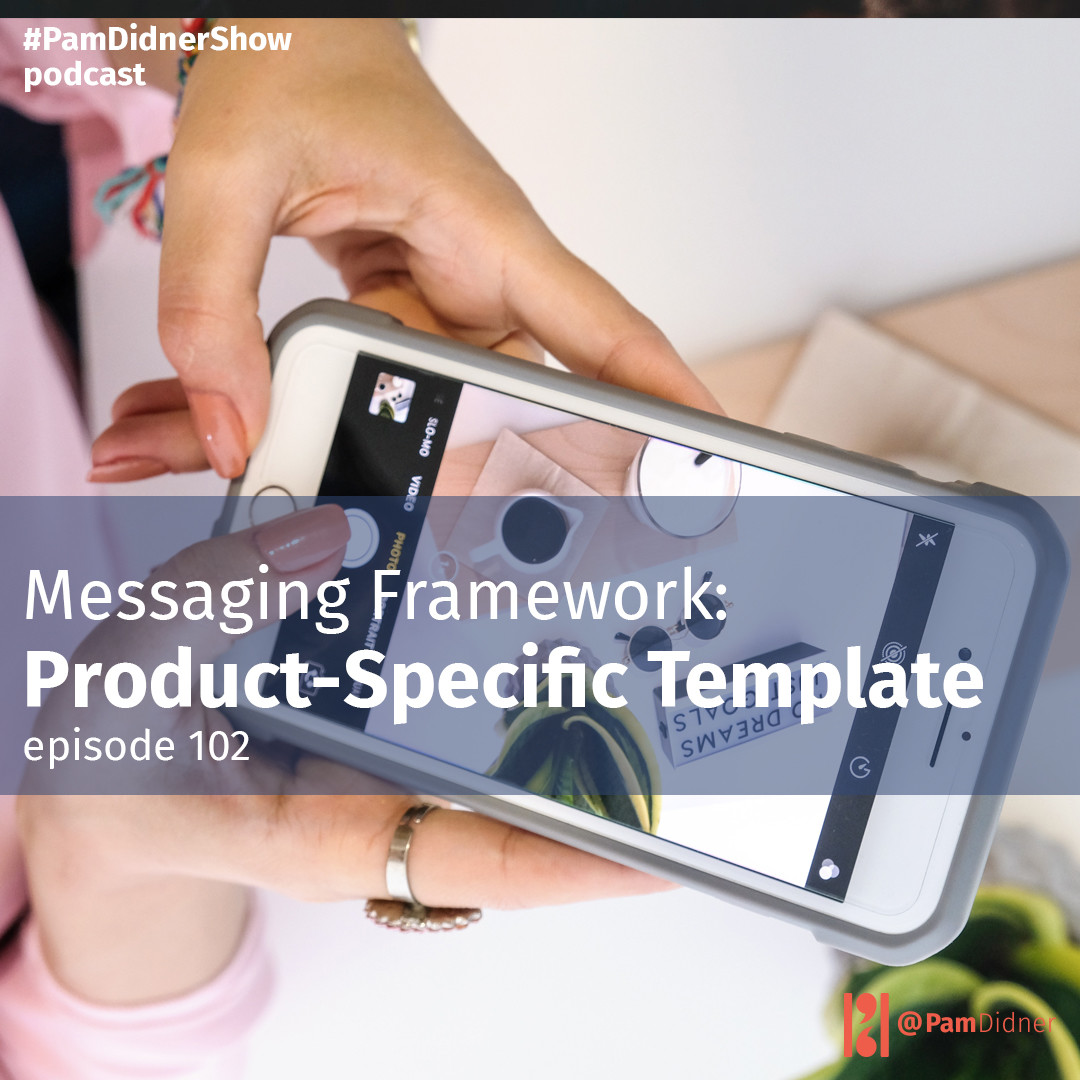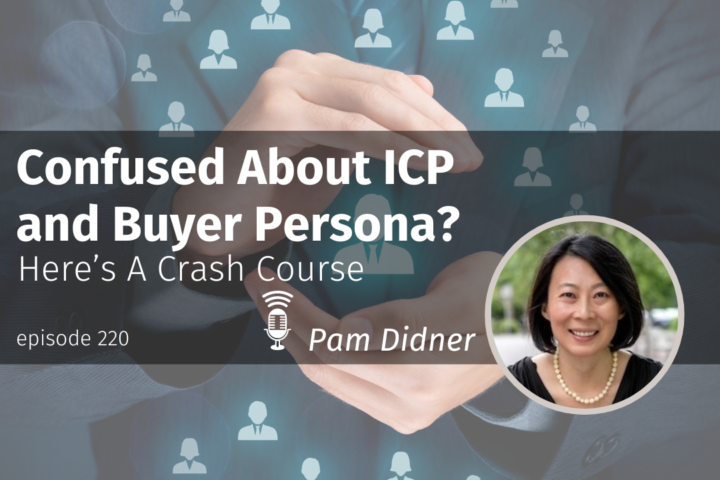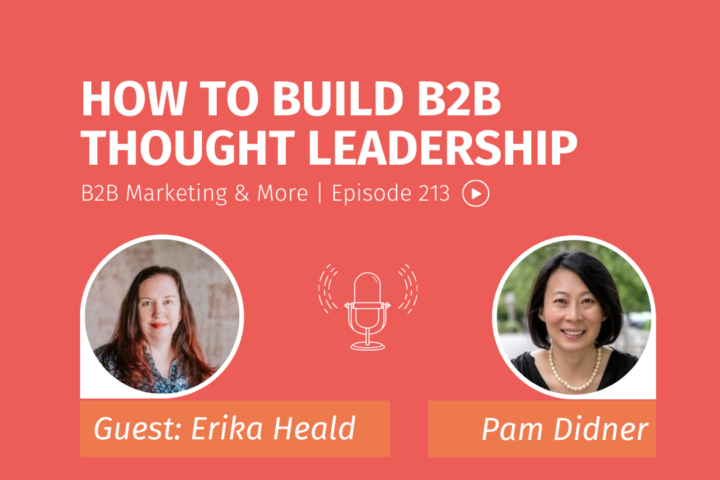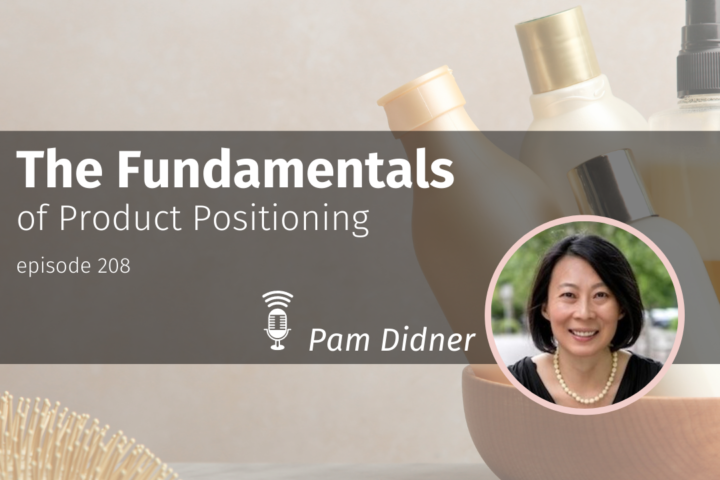
Welcome to another episode of B2B Marketing and More with Pam Didner. This is a podcast that I share my know-how and templates. I want to help you see B2B marketing from different lights and be a better B2B marketer.
In the EP101, I talked about what is a messaging framework. A messaging framework is a logical and structured representation of your products’ and services’ unique promises and differentiation.
For today’s episode, I want to talk about a messaging template. It’s very hard to talk about a template on a podcast because I can’t do a show-and-tell in front of you. You can’t really see the template. This is probably not your job, but it doesn’t get a sense of how it’s done.
So, you need to visualize it and follow along, OK?
For a messaging template, you need to start with a product.
Product-specific Messaging Framework Template
Product Name
In general, a messaging framework is product-specific, not company-specific. Think about it, we buy “things” to solve our needs.
Here is an example, when we are thirsty, we think that we want to drink some water. We are not necessarily thinking that I want to drink Fuji or Aquafina. As a marketer, that’s what we strive to achieve. When a customer needs something, they think of our brand.
So, your messaging framework needs to product-specific, not company or brand-specific.
Target Audience
In this field, you only fill out ONE audience segment in this blank. You can pick 2 or more if these audiences face similar challenges and pain points, and the talking points are very similar, but the rule of thumb is ONE! This needs to tie back to the company’s primary buyer’s personas. Your company may have many buyers’ personas. Select the one which is the primary focus for sales and marketing teams.
Value Proposition
Craft one statement to explain your product’s differentiation in the marketplace. In other words, how do you compare your product with that of your competitors?
For Salesforce, it’s number 1 CRM in the world.
For another CRM, it may be the CRM that integrated with Gmail.
You need to have one statement to define how you are different and unique from your competitors.
Customer Challenges
Write down 3 customers challenges that your products or services can solve.
I love following “The Rule of Three.” List 3 key customer challenges. Write 1-2 statements per challenge and use the first person: “I need to solve….” or “I have this challenge of….” The reason to write as the first person is that you want your internal teams or agencies to read the challenges as if they are the customer.
One example of the customer challenges for the CRM tool can be: “I need to see my dashboard anywhere and anytime using any devices.”
Messaging Positioning
This should connect directly to customer challenges. You need to write one statement to describe your product’s promise to solve the specific challenges you listed.
The position can be “Your dashboard at your fingertips.”
Product Features
You need to identify specific product features. You need to provide a list of product features which will substantiate your positioning statements. This is especially important in B2B and technology selling. Make sure to call out specific features.
Product feature to access the sales dashboard can be the mobile-app. The mobile app is available so that your customers can access the dashboard from any devices.
User Benefit
Sometimes the product features can be super-technical, then you need to be able to explain technical product features in plain English so that it resonates with your target audience.
Your product benefits: access dashboard from anywhere, anytime and from device to device.
Products, Target audience, an overarching value proposition, Customer challenges, one short statement messaging to address the customer challenges, product features to support your messaging, then you translate your product features to user benefits.
Viola, you got your messaging framework!
Keywords for Content Creation
This is optional. Since I do so much research, I always add a list of keywords that relate to my clients’ products. Agencies and content creators love it because they know what keywords to use when they start creating content. It saves them time!
Messaging remains a crucial and vital foundation for external communications and internal sales training.
Here are 3 key takeaways:
- If you want to create a messaging framework, use a template
- Make your template hierarchical. Challenges, tie with product features and tie with user benefits
- Review and test with your product teams, Sales and Customers
If you want to get my template, just go to my website, PamDidner.com, hit the contact tab. Send me an email. Or contact me through any social media channels. I am on Twitter, Facebook, and LinkedIn. I will send you the template and written samples in no time.
I’ll share more templates in the future podcast. Stay tuned.
Again, I’d really appreciate that you can like or subscribe to my podcast.
Before you leave, make sure to check out the previous podcast episodes!
Have a great day!!



